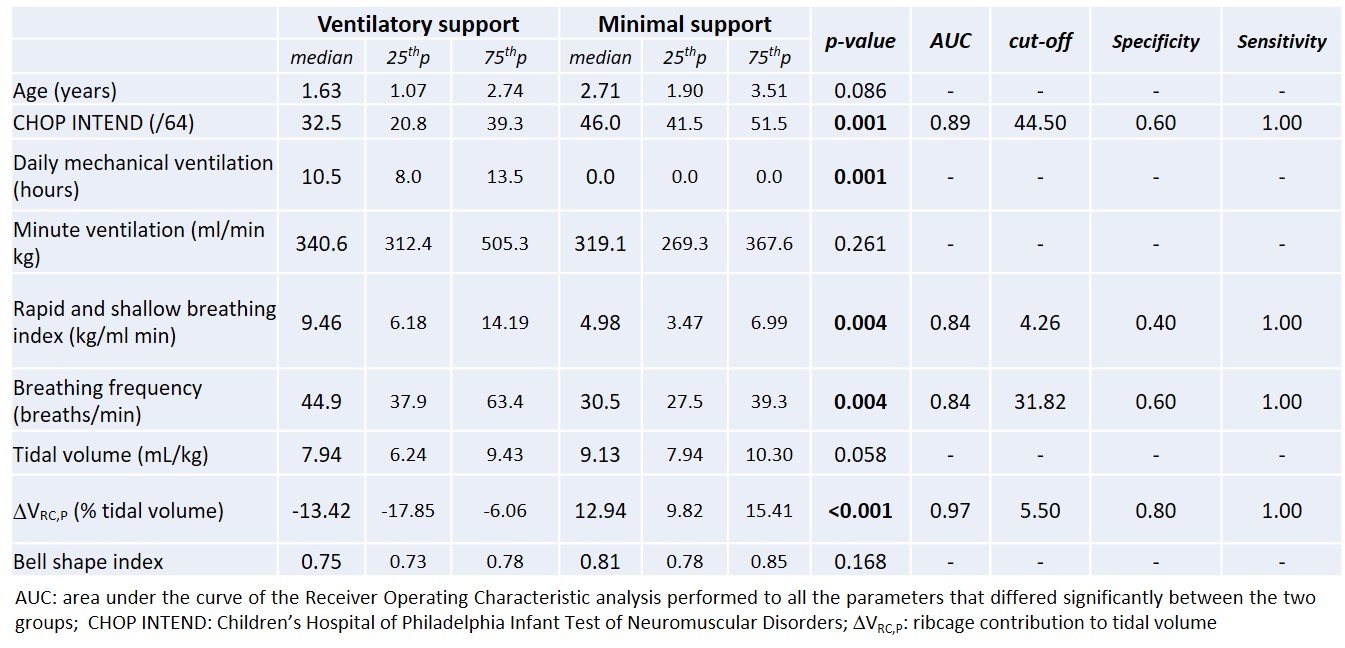Abstract
Obesity is frequently associated with breathing disorders. To investigate if the level of obesity impacts respiratory function, 10 obese class 2 (median age: 51 yrs; BMI: 38.7 kg/m2), 7 obese class 3 patients (41 yrs; 45.7 kg/m2) and 10 non-obese subjects (CTR, 49 yrs; 23.9 kg/m2) were studied. Patients were characterized by abdominal obesity (p<0.001), with abdominal volume occupying 40% and 42% in classes 2 and 3 (CTR: 31%). Lung volumes and capacities did not differ between the two classes, while the supine position reduced functional residual capacity (84.7% and 80.6% compared to the seated position in classes 2 and 3, p=0.003). At rest, breathing frequency was higher in class 3 (19 breaths/min, p=0.025). In the supine position, obese patients breathed with higher minute ventilation (class 3: 12.1 L/min, class 2: 11.4 L/min) and lower ribcage contribution (class 3: 4.9%, class 2: 6.1%) thanáCTR (7.5 L/min, p= 0.001 and 31.1%, p=0.003), indicating thoracic restriction. The figure represents the colormaps of trunk motion during tidal volume in supine position in class 3, class 2 andáCTR subject, with expansion ranging from blue (very low) to red (high).

Otherwise healthy obesity might not be characterized by restrictive lung pattern. Another sign of restriction could be poor thoracic expansion at rest in the supine position, resulting in increased ventilation. Class 3 obesity made the respiratory rate further increase.